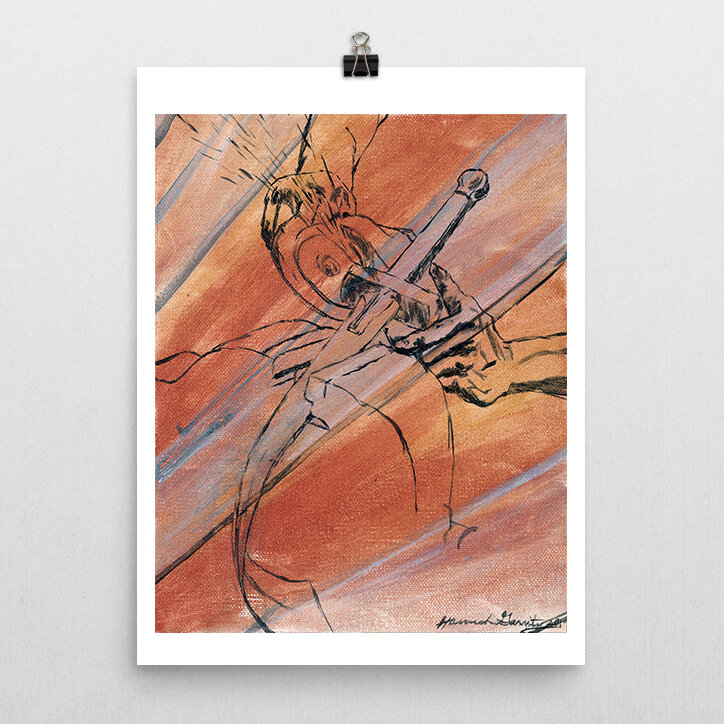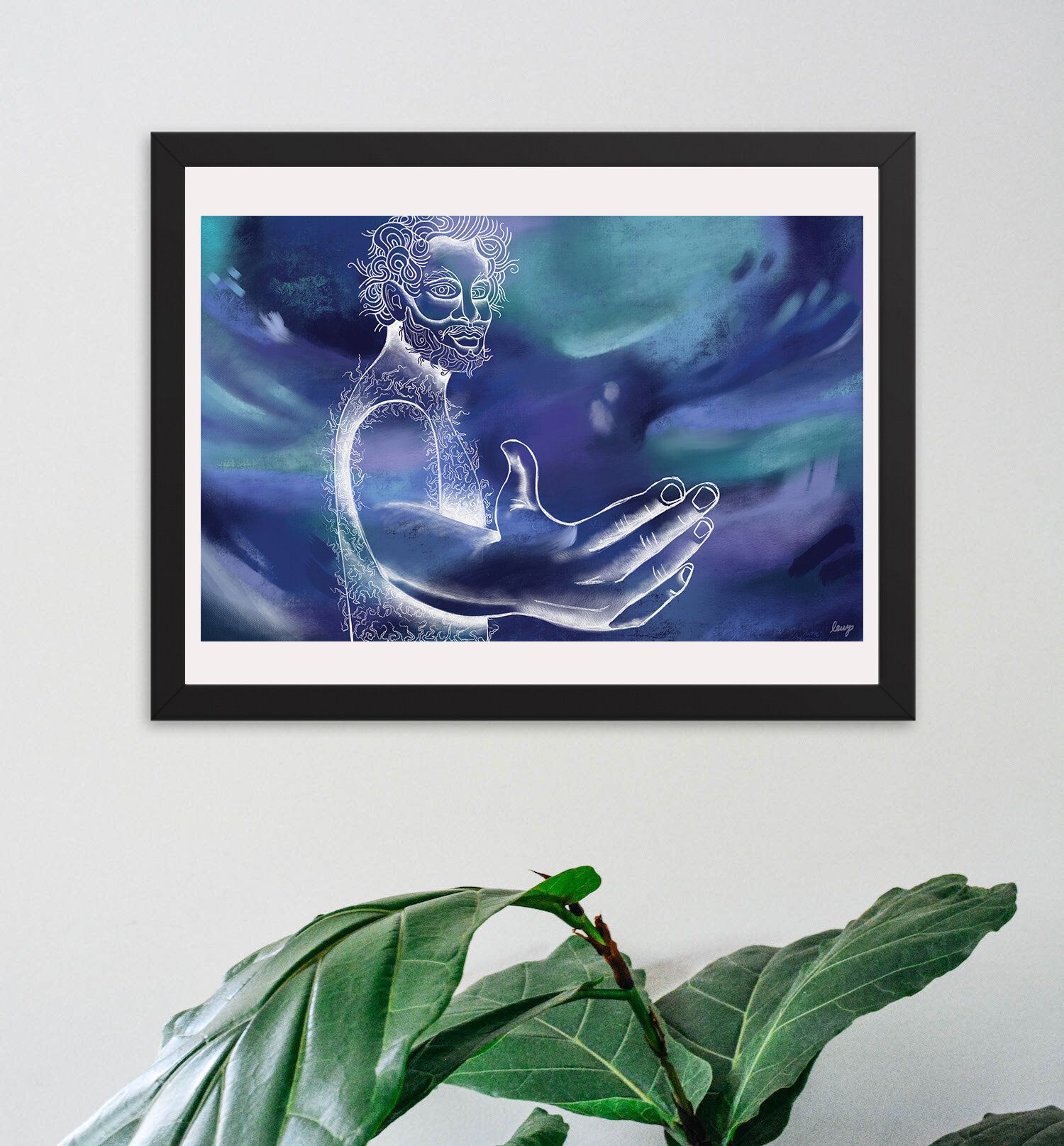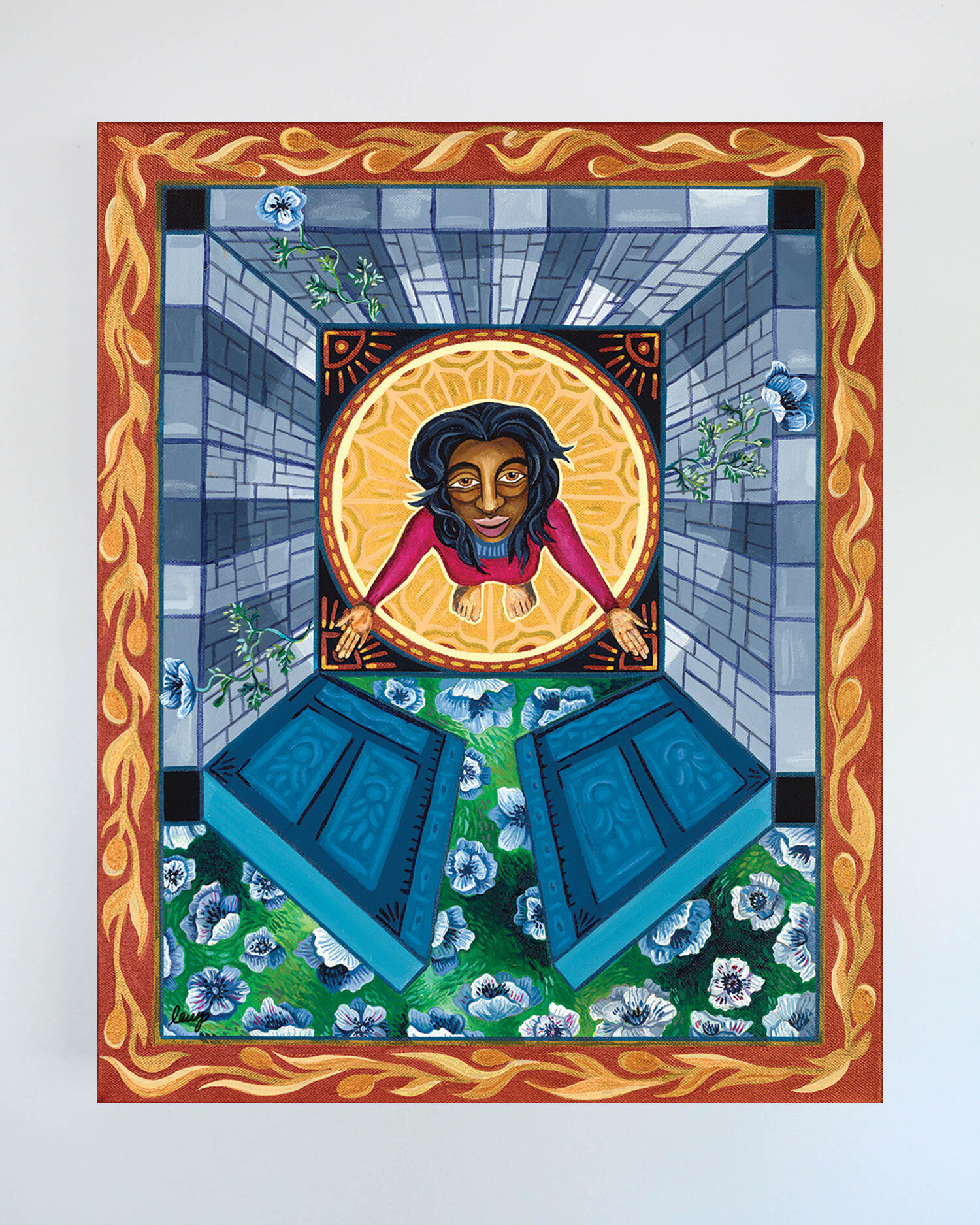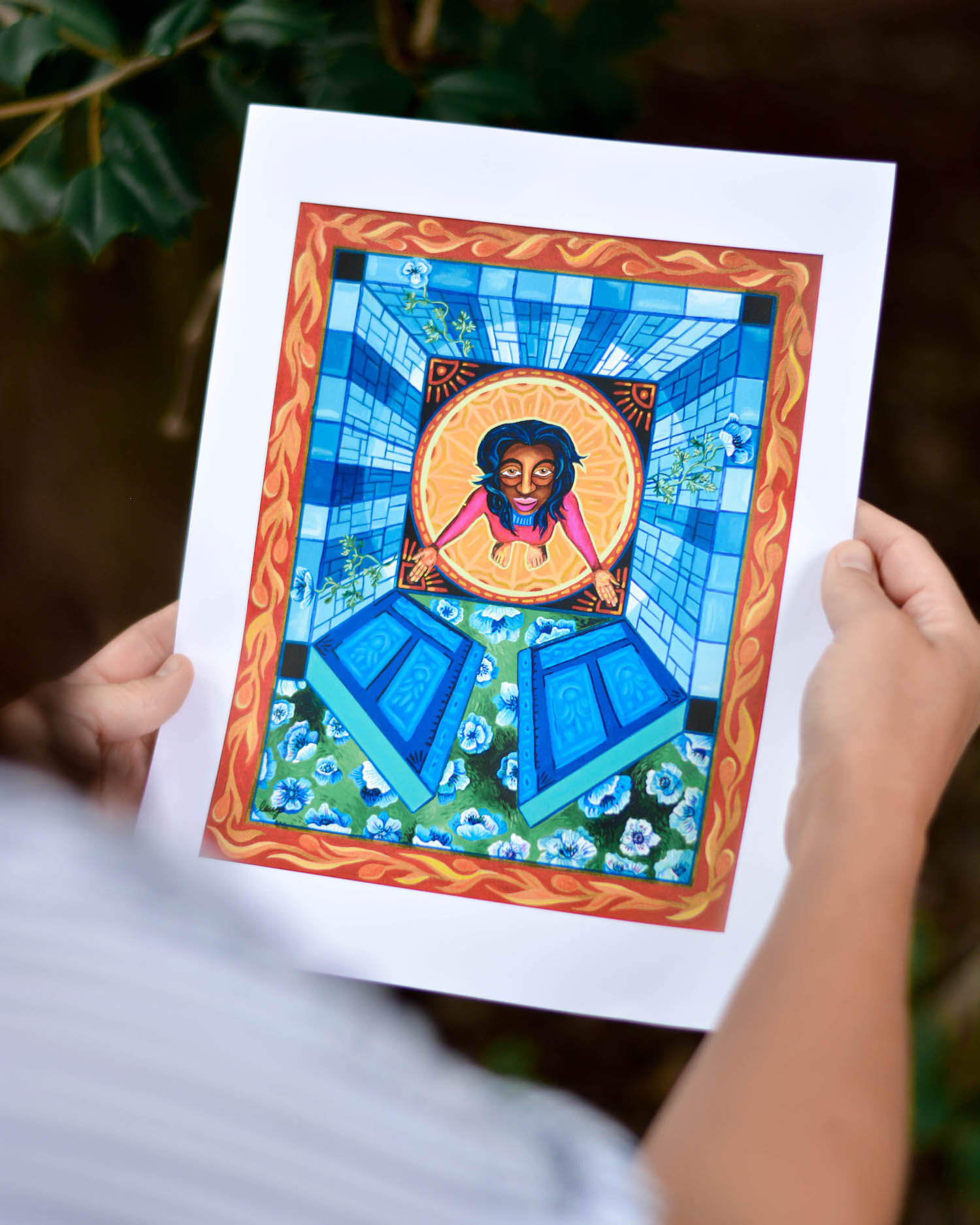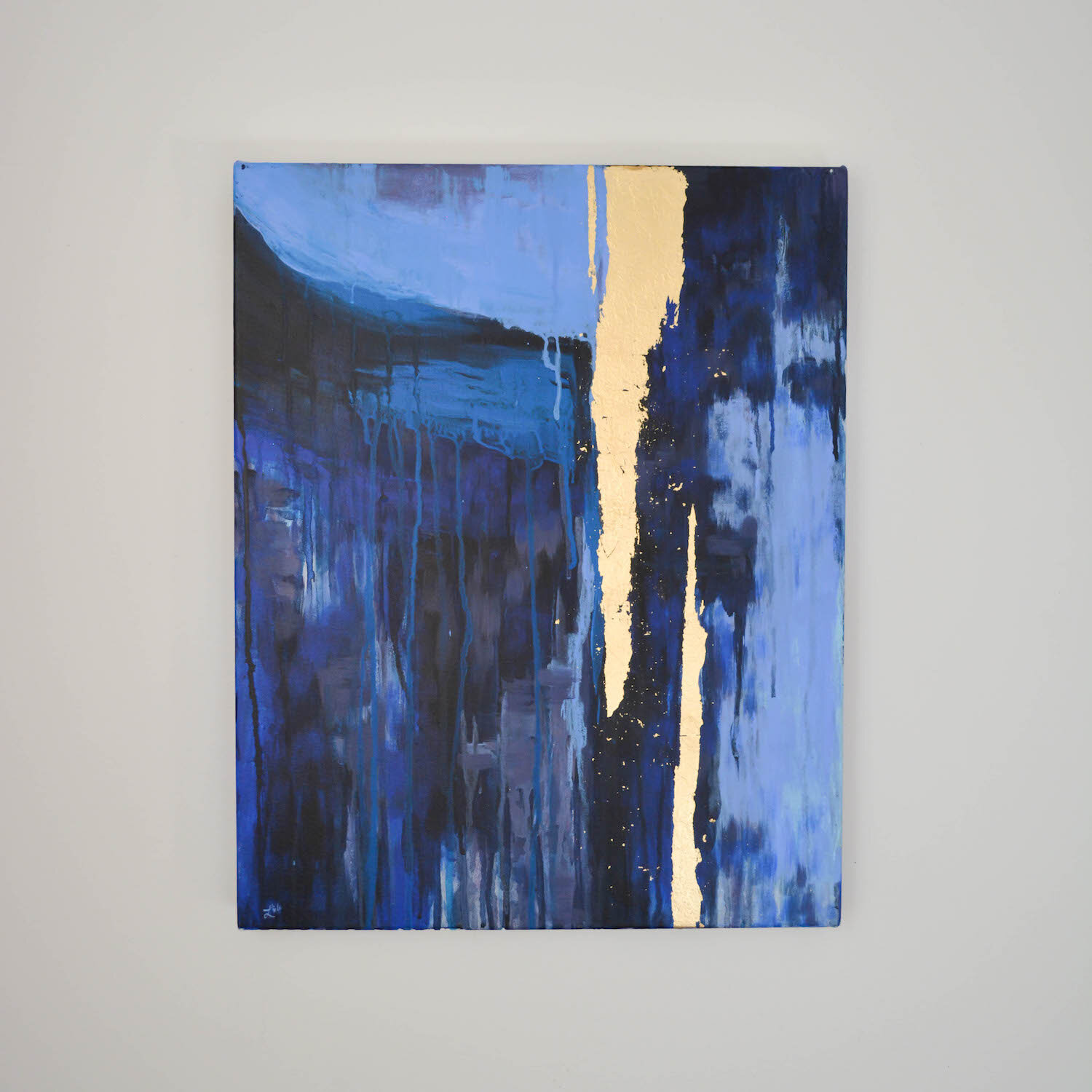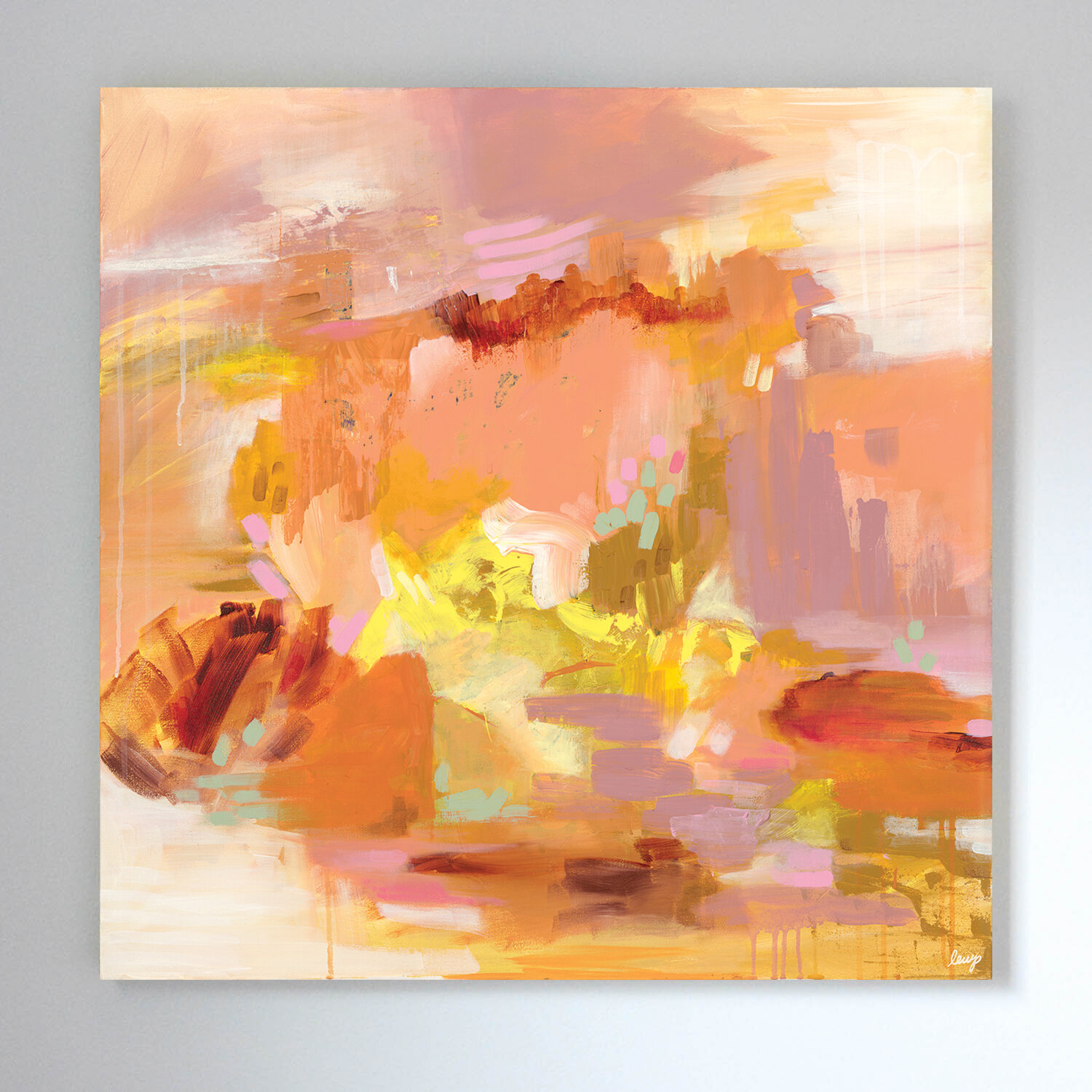Seeing in Community: The expansive practice of visio divina
As someone who engages the world primarily through visuals, I could stare at art for hours. And I do. My husband has taken me to art galleries for dates and birthday presents, and any time we travel, I find a museum to pop into. But even when I’m looking at art with others, I’m viewing it alone. When an artist statement is available, that may expand my viewing of an image by one point of view, but that’s where the expansion ends. Of course, it’s easy to fall into the trap of believing that the artist statement is the end, the “right answer” as if that exists in art. And if I allow my personal interactions with a piece of art to step aside in favor of the “correct” interpretation, my viewing contracts. I lose a crucial point of view—my own. But that’s the beauty of art. It’s supposed to be expansive. A picture isn’t worth a thousand words; it’s worth seven billion points of view.
This Advent, I’ve been practicing viewing art in community with the college ministry I work for. Each week, we’ve spent some time before worship with one of the visuals from the What Can’t Wait? Advent collection and engaged in the practice of visio divina. Over the course of about fifteen minutes, I would read the scripture the image is based on, we would view the image, and as a group, we would share our thoughts to some questions. What are you drawn to? What did you miss in your first glance? What story do you imagine for the figures? Where would you place yourself? What emotions does this elicit from you? Then, only after a discussion in which there were no right or wrong answers, I would read the artist statement aloud and ask for final thoughts.
From left to right: “Swords to Plowshares” by Hannah Garrity; “A Child Shall Lead Them” by Lisle Gwynn Garrity; “One with Mystery” by Lauren Wright Pittman.
I began our first week with “Peace Without Your Walls” by Lauren Wright Pittman. Each of the students’ responses was so true to who they are and indicative of where they are in life. Some students imagined themselves inside the walls, opening the door. Some imagined themselves laying in the grass among the flowers. Some were drawn to the geometric patterns, others to the eyes. As the weeks went on, I introduced increasingly abstract images. Though they found it harder to answer questions about where they would place themselves in the image, the conversation around the abstract pieces was more varied, abundant, and rich. Without an obvious subject, we had more freedom to see what we needed to see. Without an obvious “right” answer, any answer was “right” and all answers were “right.”
“Peace Without Your Walls,” by Lauren Wright Pittman.
The experience of seeing together provided a richer, deeper view of each image than I could imagine for myself. Unencumbered by the “correct” interpretation, the students found meaning in places I had glanced over. They gendered figures differently than I had. They sensed different emotions. And this beautiful collage of different ideas and interpretations has only opened up my interactions with the images, inviting me to fall into them again and again. To remember that it is not only intent that matters, but interaction, too. To be open to the ways the Spirit moves through word, image, relationship, and wonder. To be okay with not knowing. To lean into divine mystery.
From left to right: “Light Pierces Through” by Lisle Gwynn Garrity; “Desert Blooms” by Lauren Wright Pittman.
Anna Strickland
A Sanctified Art Intern
Anna Strickland (she/her/hers) is currently pursuing her Master's of Divinity at Iliff School of Theology. She is a native Austinite and graduated from the University of Texas where she now works in college ministry, especially serving LGBTQ students. Anna loves painting, spending time outside, and her family.

